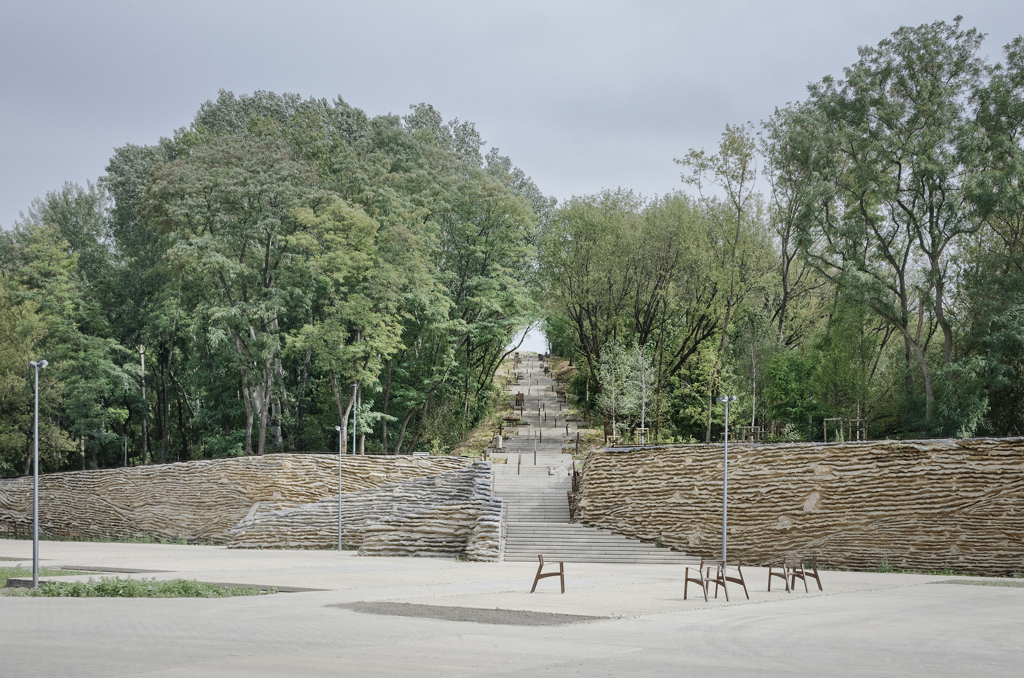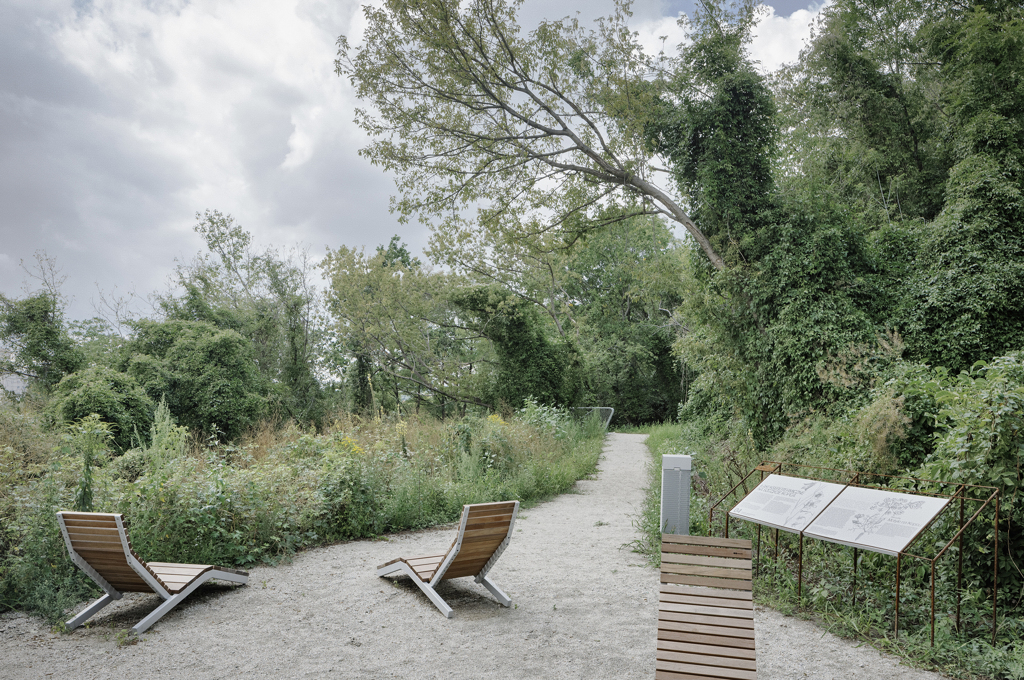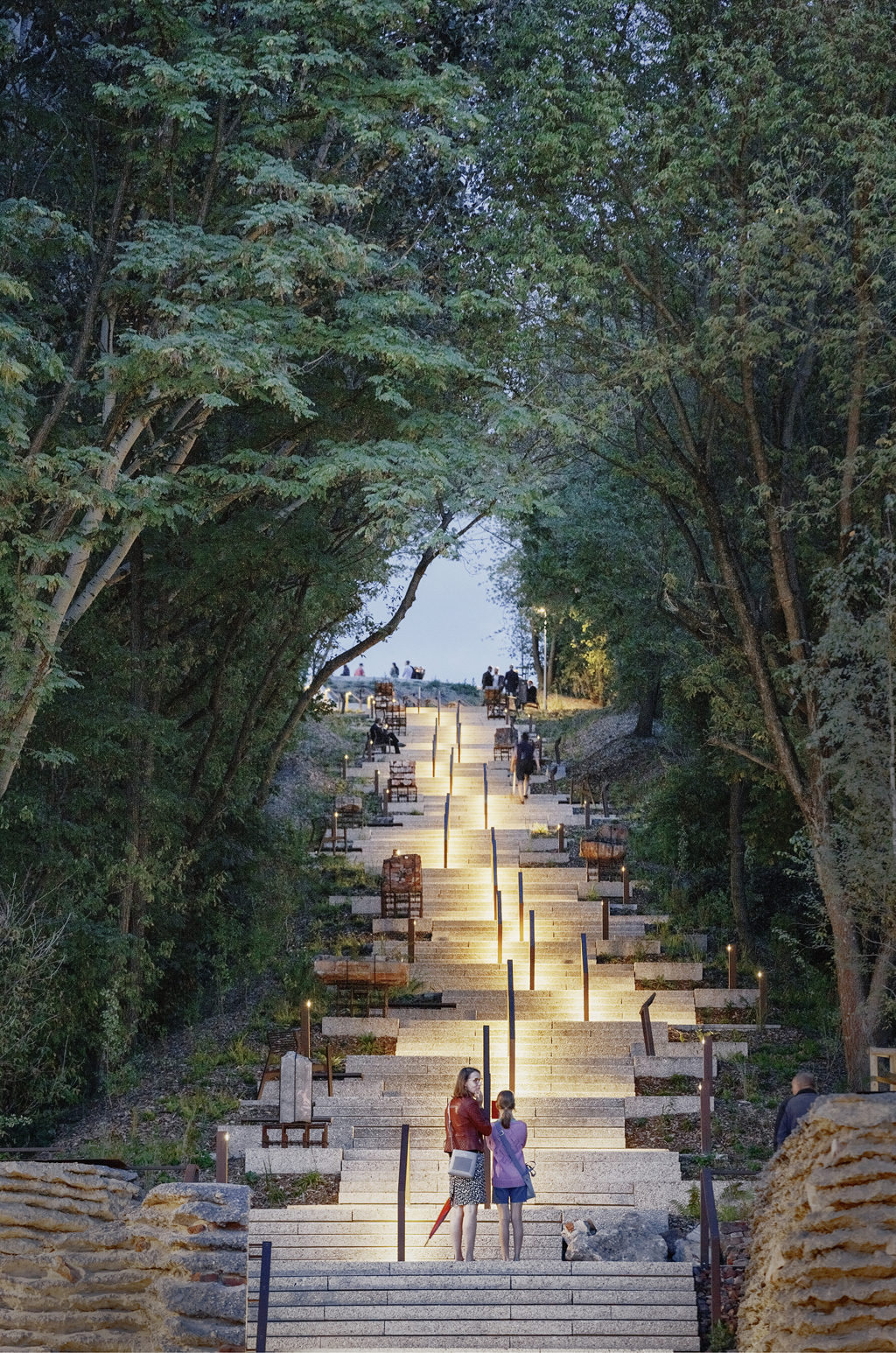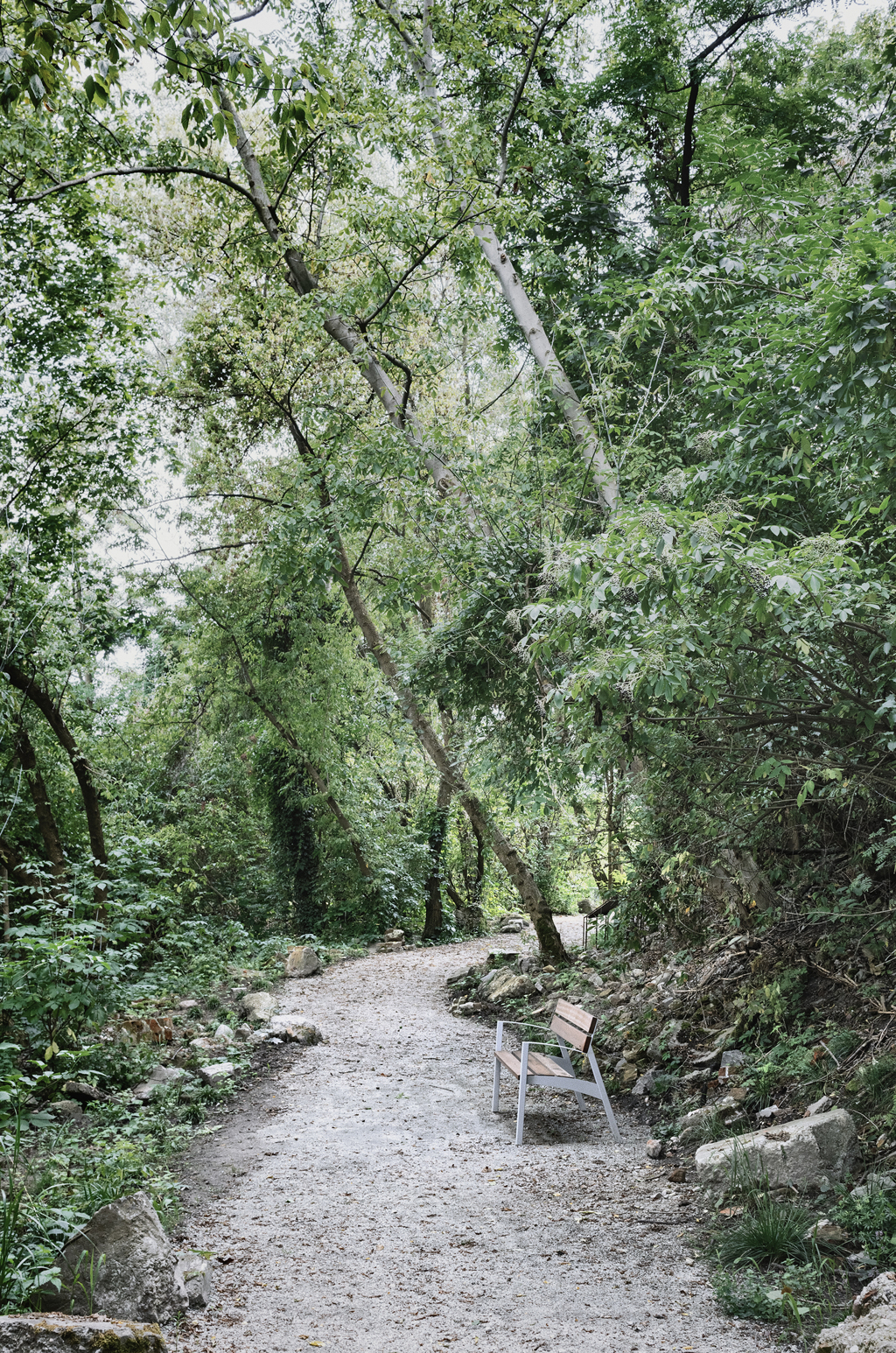4% of the rubble from World War II was used to create an anthropogenic hill in Warsaw, transformed by the archigrest and topoScape studios into the Park at the Warsaw Uprising Mound. This exceptional project, which won the 2024 European Prize for Public Space, also features mmcité products, providing seating and contemplation areas throughout various levels of the park. We discussed the transformation of this site with Magdalena Wnek from the topoScape studio.
The Park at the Warsaw Uprising Mound is the fourth natural refuge created on an anthropogenic hill that originated as a repository of rubble after World War II. What is its history?
This place was a landfill for a long time. After the fall of communism in the 90s, a monument was erected at the top of the park to commemorate the Warsaw Uprising. When we arrived, we saw its great potential. The rubble was present everywhere, along with invasive vegetation. We realized it wasn't just about the Warsaw Uprising, but also about rebuilding Warsaw after almost total destruction, which we wanted to reflect in the entire project.
How did you approach a site made of rubble?
The landfill was technically complex and wasn’t intended to be a monument, so we faced many limitations. The rubble and artificial soil were unpredictable and unstable. We couldn't remove any soil due to heritage protection, so we used special methods to build foundations for paths and stairs, ensuring inclusivity so that everyone could reach the top. Additionally, we worked with the vegetation that had been growing spontaneously for the last 40 years.
What was the site's condition when you first visited?
The vegetation was very dense and invasive, with poor visibility. Research called Bioblitz showed low biodiversity and a domination of a few invasive species. This encouraged us to think creatively about design, preserving existing vegetation, and supporting new species. We planted many new plants to increase species diversity, allowing the succession process to naturally develop and blend with the existing growth.
Alongside some of the paths, supportive "walls" emerged, which seem 3D-printed. How were they created?
The material is a mixture of concrete and rubble. In ravines it was built directly on the ground without any insulations. The walls were manually constructed by six men, layering concrete with pieces of rubble and sand in formwork. The sand was removed after the concrete hardened. As you walk through these areas, you can find artifacts discovered during the construction on-site.
So, you didn’t know how the supportive walls would look?
Exactly, it was a surprise for us as well. We couldn't evaluate the work in real time because the walls were covered with sand. These organic walls will also change over time, with surfaces designed to slowly be "engulfed" by mosses and other plants. The whole process was constantly evolving; initially, we wanted to use other technologies, but due to limitations, we ended up with concrete-soil-rubble walls. We conducted several trials and hired a concrete technologist to develop the best possible mixture. Of course, we also had many mock-ups on site before we achieved this effect.
And what about the educational part of the park? What can visitors learn there?
We collaborated with Adam Przywara, who researched the use of rubble after the war in Warsaw. We created an exhibition about the context of Warsaw's reconstruction. Our team also read diaries of people involved in rebuilding the city, searching for stories and contexts from that period. Many people remembered the feeling of returning to a destroyed city, describing it as a labyrinth of ruins. This inspired the design of the exhibition. We created gabion structures filled with rubble, not only to demonstrate history but to evoke the feeling of returning to a destroyed city.
How much rubble is in one basket?
One of the baskets, that contains 20m3 represents one millionth of the total rubble in Warsaw after World War II. We estimated that the Warsaw Uprising Mound contains 4% of Warsaw's rubble. The rest was reused for reconstruction of the city and for regulation of Wistula river. The ruble was also minced and used to produce new construction material – rubble concrete blocks. Many buildings in Warsaw were raised with this technology. Only the material that couldn’t be reused was dumped to four landfills. The other three of them are now serving as sports or other recreational areas.
In the middle of the park are long stairs with exhibited artifacts. Why did you place them here?
If left in their original places, the greenery would eventually envelop the artifacts, which we wanted to avoid. Each artifact has a label explaining its story. The stairs have a height difference of 30 meters from start to end, which is substantial, so we installed rest areas with street furniture from mmcité.
The project includes Vera and Rivage collections. How did they fit into this setting?
We placed Vera on the stairs in corten shade to match other elements and artifacts. The benches offer a spot to rest on the stairs, while Rivage loungers were used in the southern part of the park, in greenery with beautiful views. When the sun shines on this side of the hill and you comfortably settle on the loungers, you feel as if you've been transported to the Mediterranean. You just want to listen to the pleasant surrounding sounds.
Do you look for these special moments in every project?
We always strive for this. At the design stage we try to discover all the possibilities a place offers and use them in our project, in the spirit of site-specific design. Therefore, although we use the same design approach, each of our projects is different.
The park won the 2024 European Prize for Public Space. What was the competition process, and what does this award mean to you?
The award is very important to us. It evaluates not only design but also functionality and the project's broader impact. Organized by the Centre de Cultura Contemporània in Barcelona, an international jury first nominates projects from all European countries, then selects about 200–300 projects, from which they invite the top five for a personal project presentation in Barcelona. We are pleased that this project impressed the jury so much that it won first place. It demonstrates new methods for sustainable urban development and can inspire other creators.












